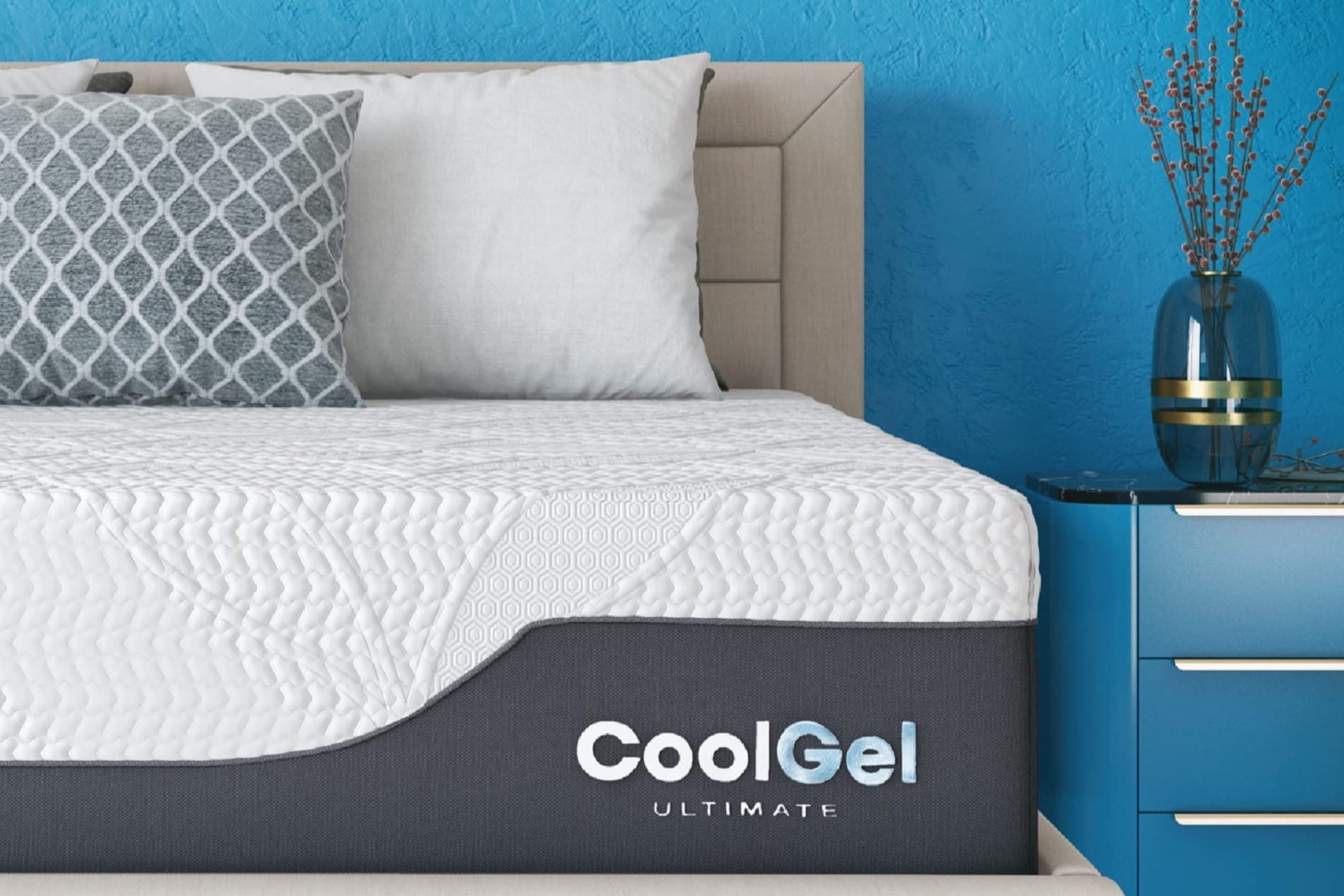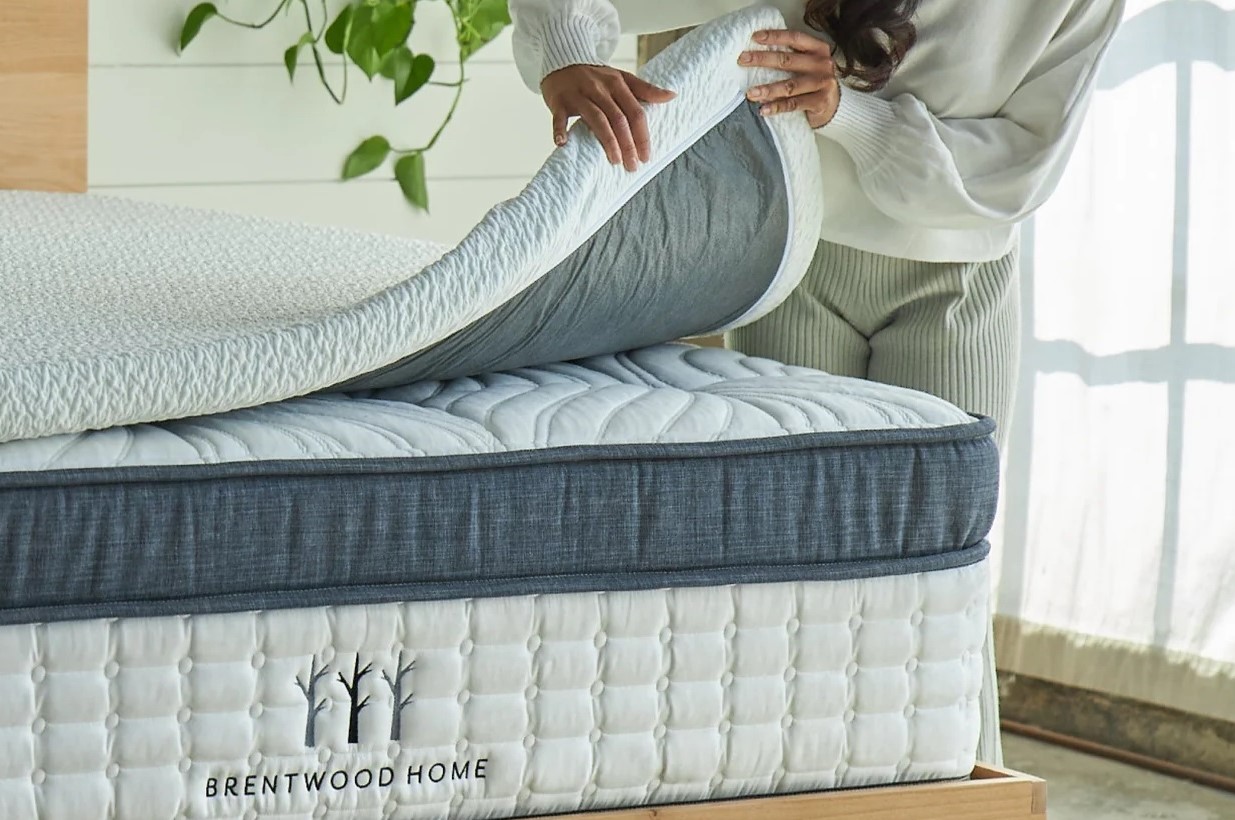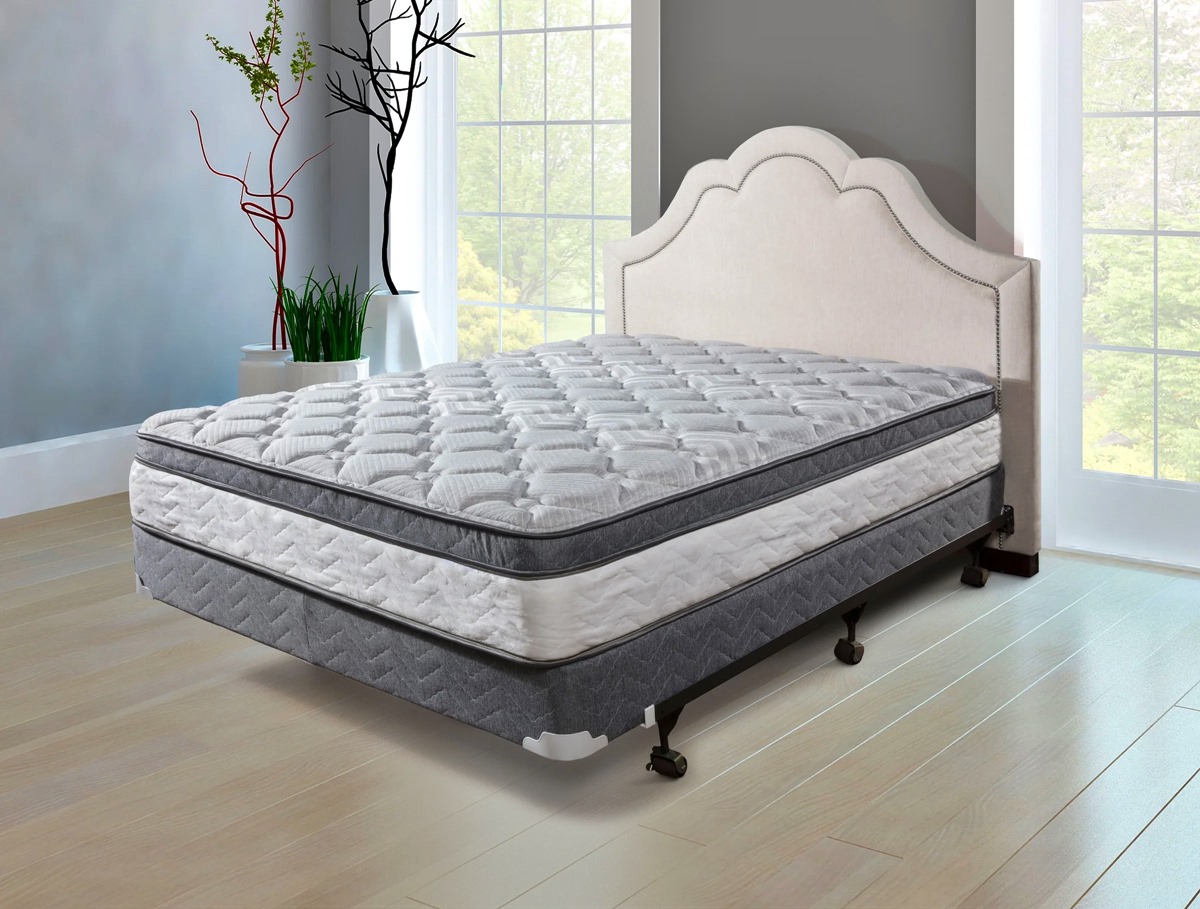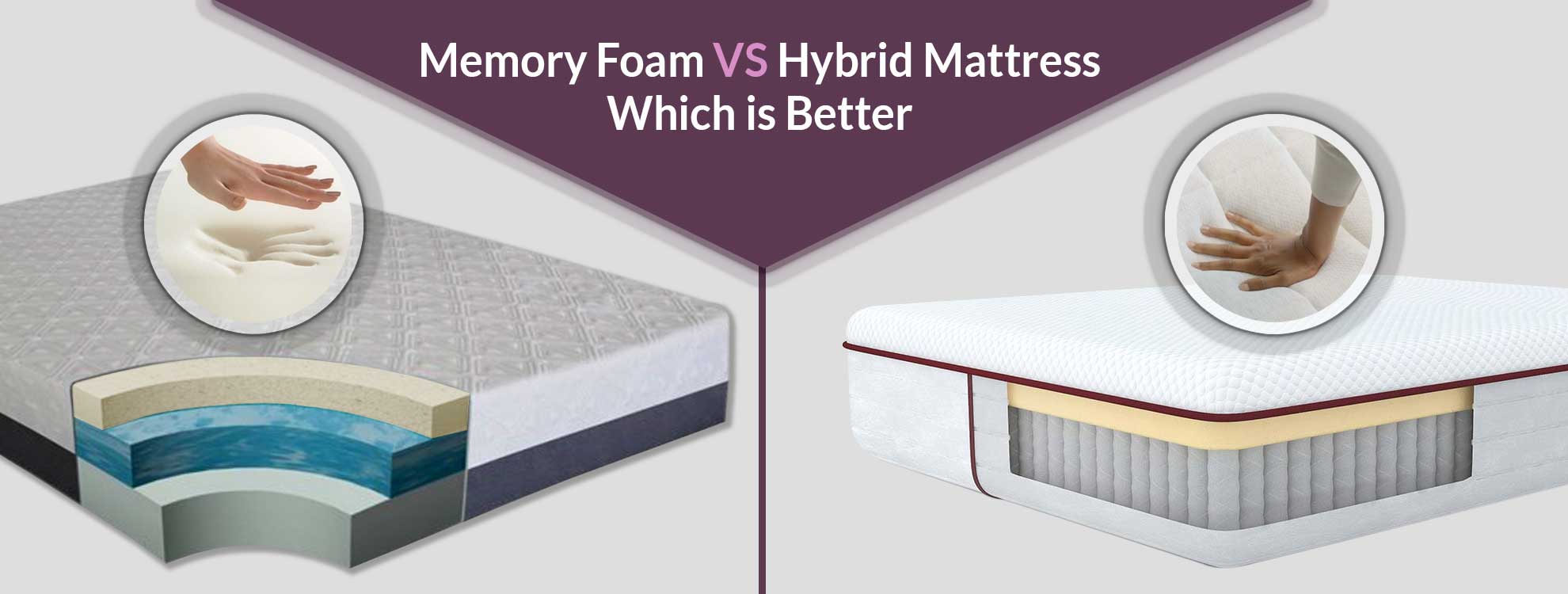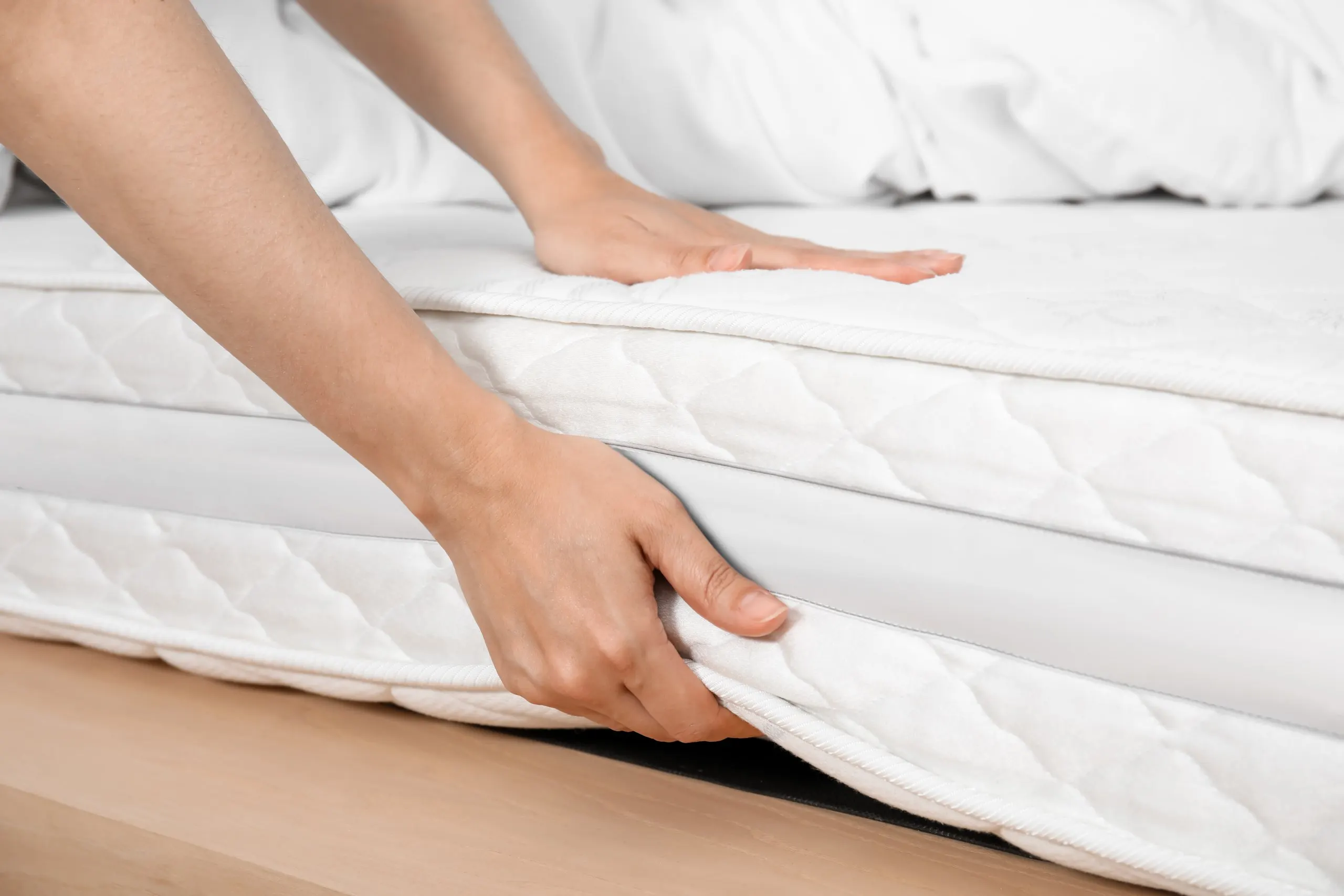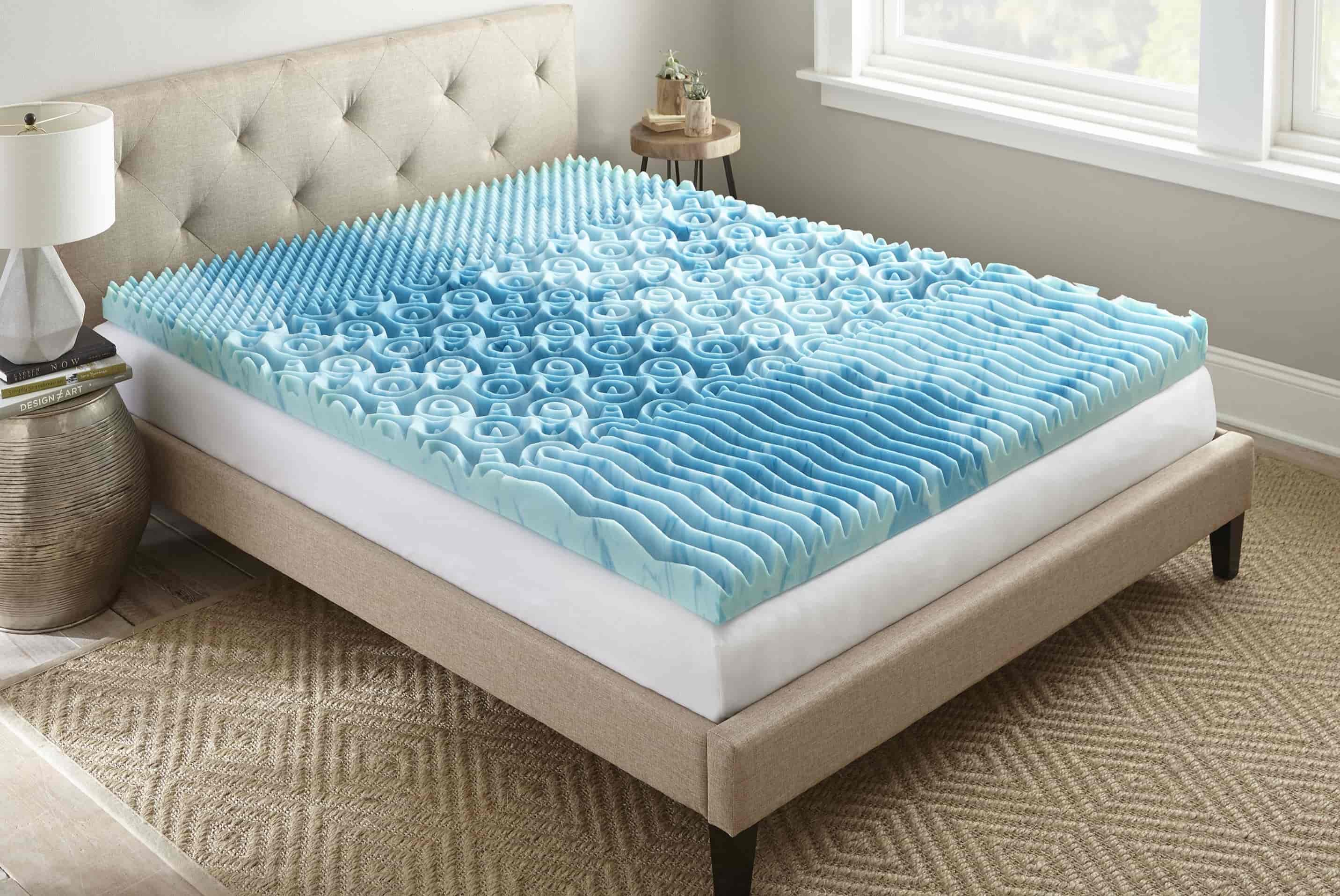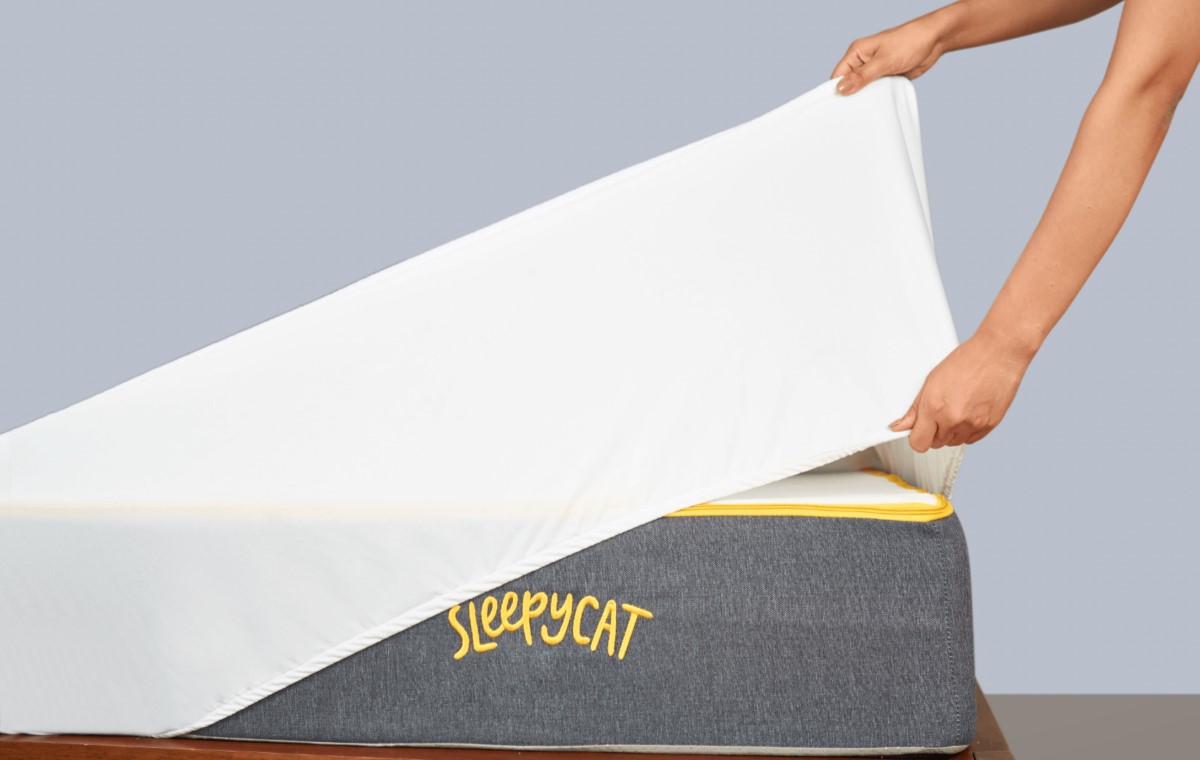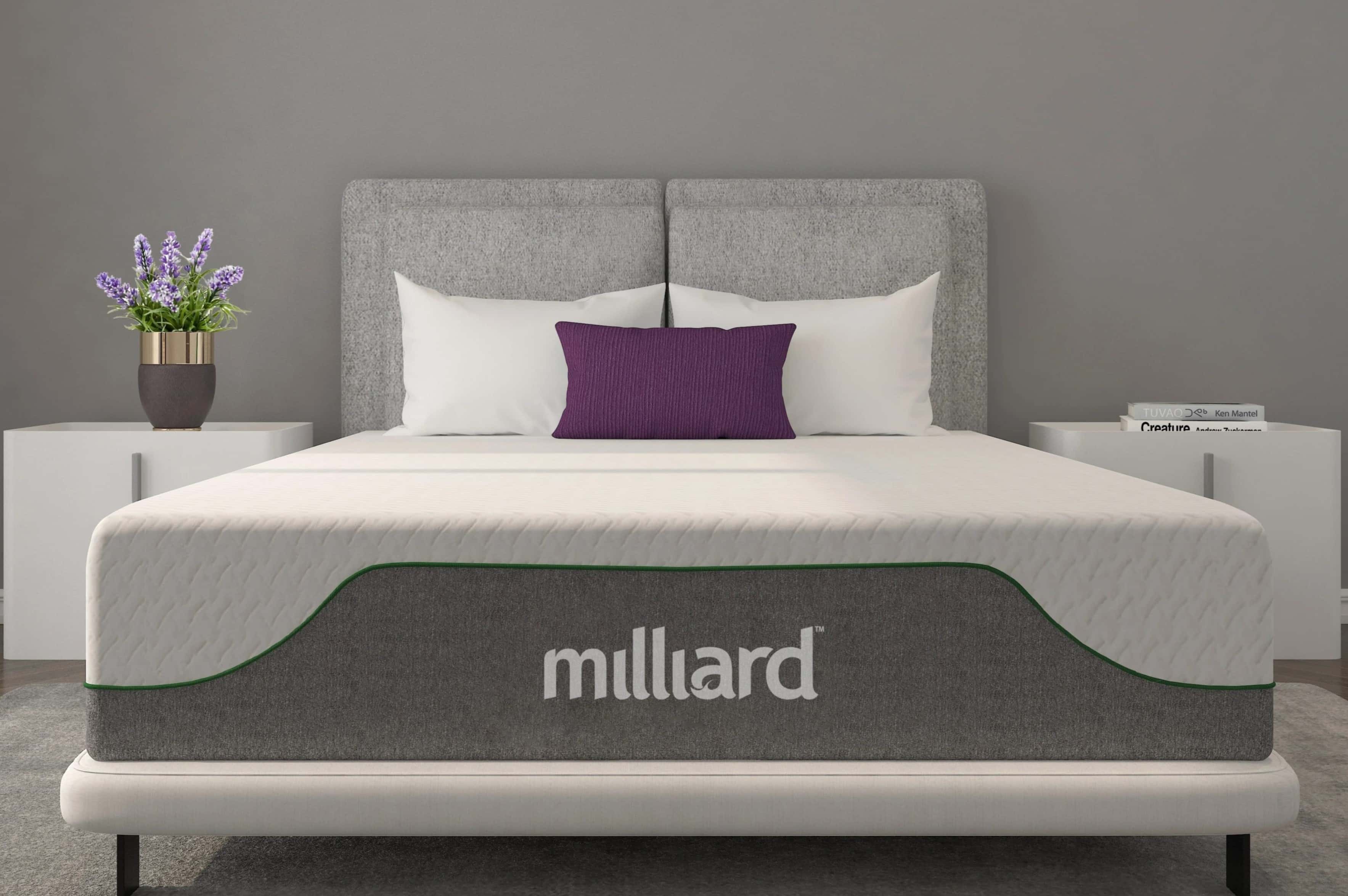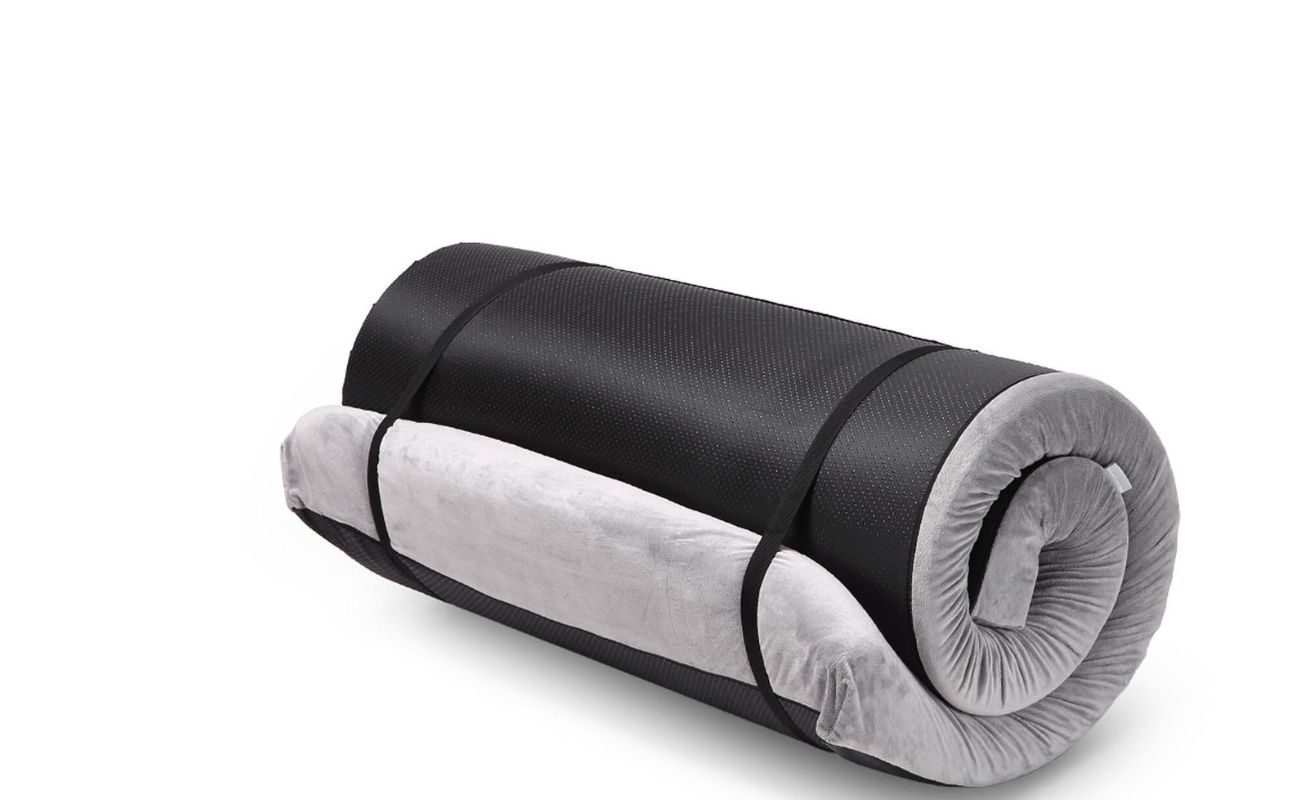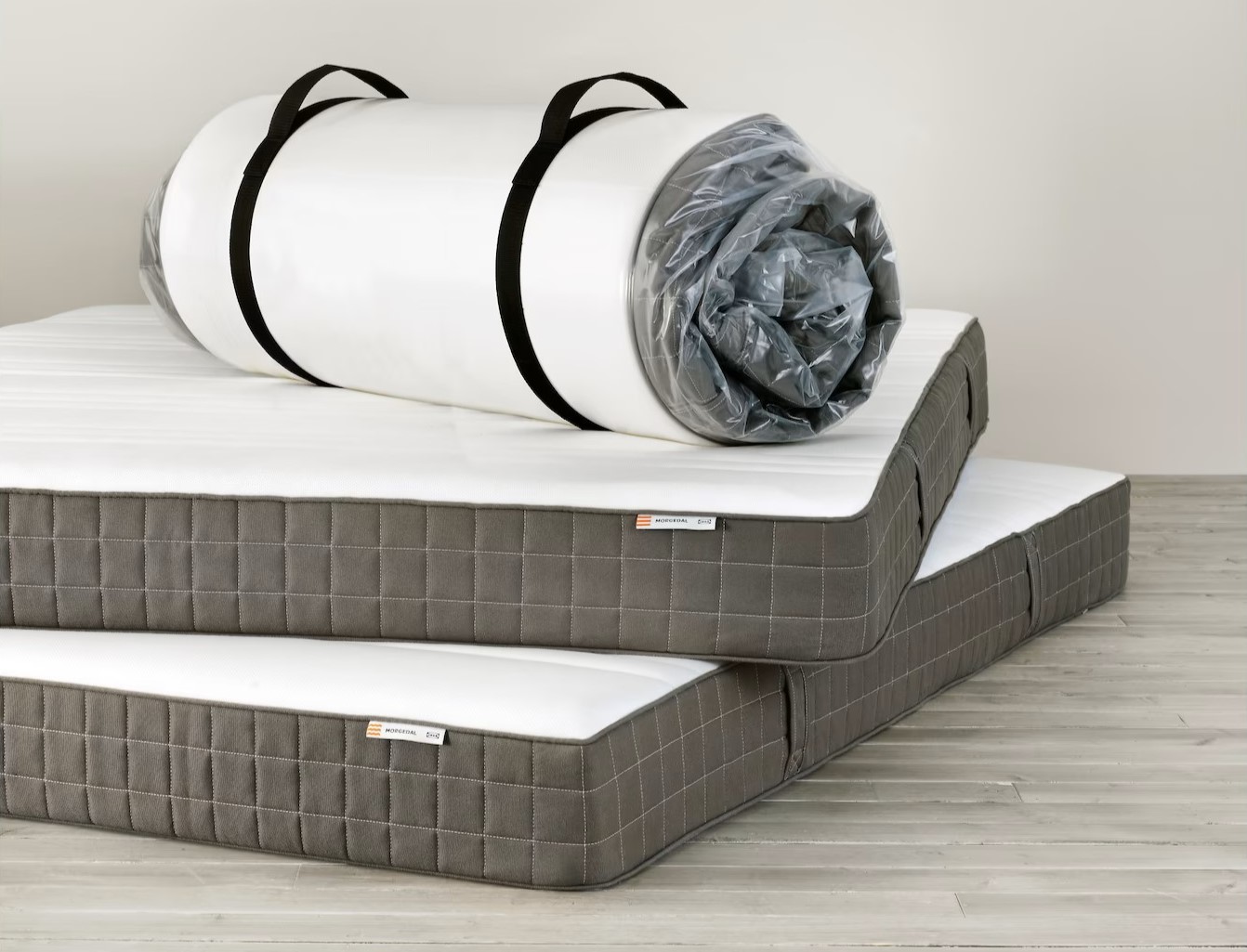Home>Furniture>Bedroom Furniture>What Is A Foam Mattress Made Of
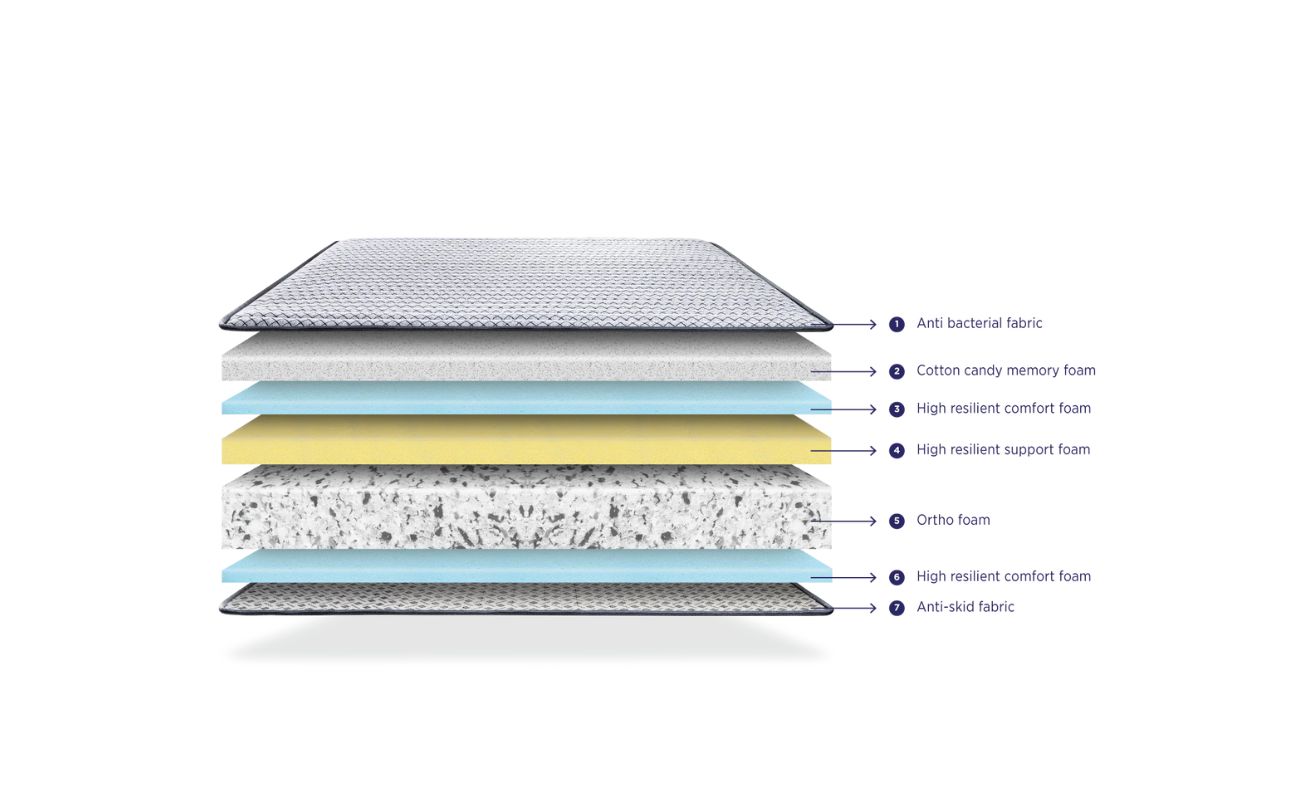

Bedroom Furniture
What Is A Foam Mattress Made Of
Modified: October 18, 2024
Discover what foam mattresses are made of and how they can enhance your sleep experience. Explore our selection of comfortable foam mattresses for your bedroom furniture.
(Many of the links in this article redirect to a specific reviewed product. Your purchase of these products through affiliate links helps to generate commission for Storables.com, at no extra cost. Learn more)
Introduction
Welcome to the world of foam mattresses, where comfort and support come together to create the perfect sleeping surface. If you’re in the market for a new mattress, you may have come across the term “foam mattress” and wondered what it’s all about. In this article, we will explore the basics of foam mattresses, the materials used in their construction, and the factors to consider when choosing one.
A foam mattress, as the name suggests, is made primarily from foam. Unlike traditional innerspring mattresses that rely on metal coils for support, foam mattresses are constructed using layers of foam materials, which can include polyurethane foam, memory foam, latex foam, and gel foam. These materials offer a wide range of benefits, making foam mattresses a popular choice among sleepers of all preferences.
When it comes to comfort, foam mattresses excel in providing pressure relief and contouring to your body’s natural shape. This is achieved through the adaptive properties of memory foam and latex foam, which conform to your body’s curves and alleviate stress on your joints. The result is a comfortable and supportive sleep surface that can help reduce aches and pains.
Not only do foam mattresses offer exceptional comfort, but they also excel in motion isolation. This means that if you share your bed with a partner, you’ll experience minimal disturbance from their movements during the night. Foam mattresses absorb movement and prevent it from transferring across the surface, allowing for a more peaceful and undisturbed sleep.
In addition to providing comfort and motion isolation, foam mattresses can also be well-suited for individuals who are sensitive to allergens. Foam materials are naturally hypoallergenic and resistant to dust mites, mold, and mildew. This makes foam mattresses an excellent option for those with allergies or asthma.
Now that we’ve established the basics of foam mattresses and their benefits, let’s delve deeper into the materials used in their construction. Understanding the different types of foam will help you make an informed decision when choosing the best mattress for your needs.
Key Takeaways:
- Foam mattresses offer personalized support, motion isolation, and hypoallergenic properties, making them a comfortable and healthy sleep choice for all preferences.
- Consider factors like firmness, density, motion isolation, and heat retention when choosing a foam mattress to ensure optimal comfort and support for a restful night’s sleep.
Read more: What Is Foam Insulation Made Of
Foam Mattress Basics
A foam mattress is a type of mattress that is primarily made from foam materials rather than traditional innerspring coils. Foam mattresses have gained popularity in recent years due to their unique combination of comfort, support, and durability.
Definition of a Foam Mattress
A foam mattress is designed to provide a comfortable and supportive sleep surface by utilizing layers of foam materials. These layers can include polyurethane foam, memory foam, latex foam, and gel foam. The foam materials used in a foam mattress offer varying levels of firmness and contouring properties, allowing the mattress to conform to the body’s natural shape.
Benefits of Using a Foam Mattress
There are several benefits to using a foam mattress:
- Pressure Relief: Foam mattresses excel in providing pressure relief. The foam materials conform to the body’s shape, distributing weight evenly and reducing pressure points. This can help alleviate aches and pains, particularly in the shoulders, hips, and lower back.
- Motion Isolation: Foam mattresses are known for their excellent motion isolation properties. The foam absorbs and dampens movement, preventing it from transferring across the surface of the mattress. This is especially beneficial for couples, as it minimizes disturbances from a partner’s movements during sleep.
- Customized Support: Foam mattresses offer customized support by conforming to the body’s contours. This contouring effect helps to align the spine and provide optimal support for different body types and sleeping positions.
- Durability: Foam mattresses are designed to be highly durable. The foam materials used in their construction are resilient and can withstand years of use without sagging or losing their shape. This longevity ensures that you can enjoy the benefits of your foam mattress for many years.
- Hypoallergenic: Foam mattresses are often hypoallergenic, resistant to dust mites, mold, and mildew. This makes them an excellent choice for individuals with allergies or asthma, as they can help create a cleaner and healthier sleeping environment.
Popular Types of Foam Mattresses
There are different types of foam mattresses available, each with its own unique characteristics:
- Polyurethane Foam: This is the most common foam material used in mattresses. It provides a good balance of comfort and support, making it suitable for a wide range of sleepers.
- Memory Foam: Memory foam is known for its contouring properties. It reacts to body heat and pressure, allowing it to conform closely to the body’s shape. This can provide excellent pressure relief and personalized support.
- Latex Foam: Latex foam is derived from the sap of rubber trees. It offers a responsive and bouncy feel, providing a combination of comfort and support. Latex foam is also naturally breathable and resistant to dust mites.
- Gel Foam: Gel foam incorporates gel beads or layers into the foam material. This helps to dissipate heat and regulate body temperature, making it an excellent choice for sleepers who tend to sleep hot.
Now that you have a better understanding of foam mattress basics, let’s explore the materials used in their construction and how they contribute to the overall comfort and performance of the mattress.
Read more: What Is The Purple Mattress Made Of
Materials Used in Foam Mattresses
Foam mattresses are constructed using a variety of foam materials, each with its own unique properties and benefits. Understanding these materials will help you make an informed decision when choosing a foam mattress that suits your specific sleep needs.
Polyurethane Foam
Polyurethane foam is one of the most commonly used materials in foam mattresses. It is a versatile and affordable foam that provides a good balance of comfort and support. Polyurethane foam can vary in density and firmness, allowing mattress manufacturers to create different levels of support and pressure relief. It is also known for its durability, making it a long-lasting choice for foam mattresses.
Memory Foam
Memory foam is a unique and popular foam material used in foam mattresses. It is well-known for its ability to contour to the body’s shape, providing personalized support and pressure relief. Memory foam responds to heat and pressure, allowing it to mold to the body’s curves and distribute weight evenly. This helps relieve pressure points and can alleviate aches and pains. Memory foam also has excellent motion isolation properties, making it an ideal choice for couples who want to minimize disturbances from a partner’s movements during sleep.
Latex Foam
Latex foam is derived from the sap of rubber trees and is known for its resilience, durability, and natural antimicrobial properties. It provides a responsive and bouncy feel, offering a combination of comfort and support. Latex foam contours to the body without sinking too much, promoting proper spinal alignment and reducing pressure points. It is also naturally breathable, allowing for better airflow and temperature regulation during sleep. Additionally, latex foam is resistant to dust mites, mold, and mildew, making it a great option for those with allergies or asthma.
Read more: What Is A Cold Foam Mattress
Gel Foam
Gel foam is a newer innovation in foam mattress materials. It incorporates gel beads or layers into the foam to help regulate temperature and dissipate heat. Gel foam is designed to offer a cooler sleep surface, making it an excellent choice for sleepers who tend to sleep hot or live in warmer climates. The gel infusion works by absorbing and dispersing heat away from the body, allowing for a more comfortable and temperature-neutral sleep experience.
Each foam material has its own set of advantages, so when choosing a foam mattress, it’s essential to consider your preferences for support, comfort, temperature regulation, and any specific needs you may have, such as allergies or sensitivity to heat. Understanding the different foam materials will help you select a foam mattress that provides the optimal balance of comfort and support for a restful night’s sleep.
Now that we’ve explored the materials used in foam mattresses, let’s dive into the construction of foam mattresses and the layers that contribute to their overall comfort and support.
Construction of Foam Mattresses
The construction of foam mattresses involves a combination of layers and materials designed to provide comfort, support, and other features such as cooling. Understanding the different components of foam mattress construction can help you choose a mattress that meets your specific sleep needs.
Layering Technique
Foam mattresses are constructed using a layering technique that combines different foam materials to achieve the desired comfort and support levels. The layering technique allows manufacturers to customize the mattress’s feel and performance by strategically placing layers of varying densities and firmness.
Supportive Base Layer
At the core of a foam mattress is the supportive base layer. This layer serves as the foundation and provides stability and overall structural support for the mattress. Typically made from high-density foam, the base layer ensures proper alignment of the spine and helps distribute body weight evenly across the mattress’s surface.
Read more: What Is A Gel Foam Mattress
Comfort Layers
Above the supportive base layer are the comfort layers, which provide cushioning and contouring for the body. The comfort layers often consist of memory foam, latex foam, or a combination of both. These layers are responsible for the mattress’s ability to relieve pressure points, conform to the body’s shape, and provide a comfortable sleeping surface.
The number and thickness of comfort layers can vary depending on the mattress design and desired level of plushness. Multiple layers allow for better contouring and customization of comfort, catering to different body types and sleep preferences.
Cooling Features
Many foam mattresses now include cooling features to combat the tendency of foam to retain heat. Common cooling technologies used in foam mattresses include gel-infused foam and breathable covers.
Gel-infused foam has gel beads or layers incorporated into the foam material, promoting better heat dissipation and creating a cooler sleep environment. The gel absorbs body heat and redistributes it, preventing overheating during sleep.
In addition, foam mattresses may feature breathable covers or mattress toppers that enhance airflow and promote better temperature regulation. These covers often use moisture-wicking fabrics and have special ventilation channels or perforations to allow heat and moisture to escape, keeping you cool and comfortable throughout the night.
By incorporating these cooling features, foam mattresses aim to address one of the common concerns associated with foam materials and provide a comfortable sleep experience even for those who are prone to overheating during sleep.
The construction of foam mattresses combines the layering technique, a supportive base layer, comfort layers, and cooling features to create a mattress that offers optimal comfort, support, and temperature regulation. When choosing a foam mattress, consider the construction elements that align with your preferences for comfort, support, and cooling, ensuring a restful and rejuvenating sleep experience.
Now let’s move on to exploring the factors to consider when choosing a foam mattress, so you can make an informed decision that suits your individual needs.
Factors to Consider When Choosing a Foam Mattress
When selecting a foam mattress, it’s vital to consider various factors to ensure that you find the perfect mattress that suits your individual needs and preferences. These factors range from firmness level and density to motion isolation and heat retention capabilities. Let’s explore these factors in more detail:
Firmness Level
The firmness level of a foam mattress determines how soft or firm it feels when you lie down on it. Foam mattresses come in a range of firmness options, typically rated on a scale from 1 to 10, with 1 being extremely soft and 10 being exceptionally firm.
Choosing the right firmness level is subjective and depends on your personal preferences and sleeping style. Side sleepers often prefer a softer to medium-firm mattress to cushion their pressure points, while back and stomach sleepers tend to opt for a firmer mattress for proper spinal alignment and support.
Read more: What Is Memory Foam Made From
Density and Durability
The density of foam used in a mattress is an important consideration as it determines the overall durability and support of the mattress. Density is measured in pounds per cubic foot (PCF), and higher density foam tends to be more durable and resilient.
A higher density foam mattress offers better longevity, as it can withstand regular use without sagging or losing its shape. Lower density foam may be softer initially but can deteriorate more quickly over time. Consider opting for a foam mattress with a density of at least 4 to 5 PCF for optimal support and durability.
Motion Isolation
If you share your bed with a partner, motion isolation is an essential factor to consider. Foam mattresses excel in motion isolation, meaning that they absorb and minimize the transfer of motion across the mattress’s surface.
This is particularly beneficial if you or your partner are restless sleepers. Foam’s ability to isolate motion ensures that you won’t be disturbed by your partner’s movements during the night, allowing for a more peaceful and uninterrupted sleep.
Heat Retention
Foam mattresses can have a reputation for trapping heat and causing sleepers to feel uncomfortably hot. However, advancements in foam technology have led to the development of cooling features and materials that address this issue.
Look for foam mattresses that incorporate cooling technologies such as gel-infused foam, open-cell foam, or breathable covers. These features help dissipate heat and promote better airflow, allowing for a cooler and more comfortable sleep experience.
Consider your personal preferences for temperature regulation during sleep, especially if you tend to sleep hot, to ensure that the foam mattress you choose offers adequate heat dissipation.
By considering factors such as firmness level, density and durability, motion isolation, and heat retention, you can make an informed decision when choosing a foam mattress that caters to your specific sleep needs. Remember to prioritize your personal comfort preferences and consider any specific requirements for a restful and rejuvenating night’s sleep.
Now let’s explore the care and maintenance tips for foam mattresses, so you can keep your mattress in excellent condition for years to come.
Care and Maintenance of Foam Mattresses
Proper care and maintenance are essential to prolonging the life and ensuring the continued comfort of your foam mattress. By following these simple care tips, you can keep your mattress in excellent condition for years to come.
Read more: What Is A Memory Foam Mattress
Cleaning and Stain Removal
To keep your foam mattress clean and fresh, it’s essential to regularly remove dust, dirt, and allergens. Here are some cleaning and stain removal tips:
- Vacuum your mattress regularly using a soft brush attachment to remove dust and debris.
- If you encounter any spills or stains, it’s important to clean them promptly. Use a mild detergent mixed with water to gently spot clean the affected area. Avoid saturating the mattress with excess moisture.
- Allow the mattress to air dry completely before putting any bedding or covers back on.
- Avoid using harsh chemicals or bleach on your mattress, as these can damage the foam materials.
Rotating or Flipping
Unlike traditional innerspring mattresses, most foam mattresses are designed to be one-sided and do not require flipping. However, rotating the mattress 180 degrees every three to six months can help distribute the wear and tear evenly, resulting in extended mattress life and improved comfort.
Check the manufacturer’s guidelines to determine if your particular foam mattress requires rotation or flipping. Some foam mattresses are designed with specific comfort layers or construction that doesn’t necessitate rotating or flipping.
Protecting with Mattress Covers
Using a mattress cover or protector is a great way to safeguard your foam mattress from spills, stains, and allergens. Mattress covers act as a barrier, preventing liquids, dust mites, and other particles from penetrating the mattress and potentially causing damage or triggering allergies.
Choose a mattress cover that is breathable and moisture-wicking to help maintain a comfortable sleep environment. Make sure to select a size that fits snugly around your mattress and is machine washable for easy cleaning.
In addition to protecting your mattress, mattress covers can also provide an extra layer of comfort and enhance the longevity of your foam mattress.
By following these care and maintenance tips, you can keep your foam mattress clean, fresh, and in optimal condition for many years to come. Proper care not only ensures the longevity of your mattress but also contributes to your overall sleep quality and comfort.
Now you have the knowledge to care for your foam mattress properly. Let’s conclude with a summary of what we’ve discussed.
Conclusion
Foam mattresses provide a comfortable and supportive sleep surface, making them a popular choice among individuals seeking a restful night’s sleep. With their innovative materials and construction techniques, foam mattresses offer a variety of benefits that can enhance your sleep experience.
We explored the basics of foam mattresses, including their definition and the benefits they offer. From pressure relief and motion isolation to customized support and hypoallergenic properties, foam mattresses excel in providing a comfortable and healthy sleep environment.
When choosing a foam mattress, it’s crucial to consider factors such as firmness level, density and durability, motion isolation, and heat retention. By assessing your personal preferences and specific sleep needs, you can select a foam mattress that aligns with your requirements and provides the comfort and support you desire.
Caring for your foam mattress is also important to ensure its longevity and continued performance. Regular cleaning, spot treatment of stains, and rotating (if required) will help maintain the cleanliness and even wear of the mattress. Additionally, using a mattress cover or protector can offer an extra layer of protection, safeguarding your foam mattress from spills, stains, and allergens.
With proper care and maintenance, your foam mattress can provide you with a comfortable and supportive sleep surface for many years, promoting restful sleep and overall well-being.
Whether you choose a foam mattress with polyurethane foam, memory foam, latex foam, or gel foam, you can rest assured knowing that you’ve invested in a sleep solution that prioritizes your comfort and support needs.
Now that you’re equipped with the knowledge of foam mattress basics, materials used, construction techniques, and care tips, you can confidently embark on your journey to finding the perfect foam mattress that suits your unique sleep preferences.
So, dive into the world of foam mattresses, discover the benefits they offer, and enjoy a night of restful sleep on your very own foam mattress.
Frequently Asked Questions about What Is A Foam Mattress Made Of
Was this page helpful?
At Storables.com, we guarantee accurate and reliable information. Our content, validated by Expert Board Contributors, is crafted following stringent Editorial Policies. We're committed to providing you with well-researched, expert-backed insights for all your informational needs.
